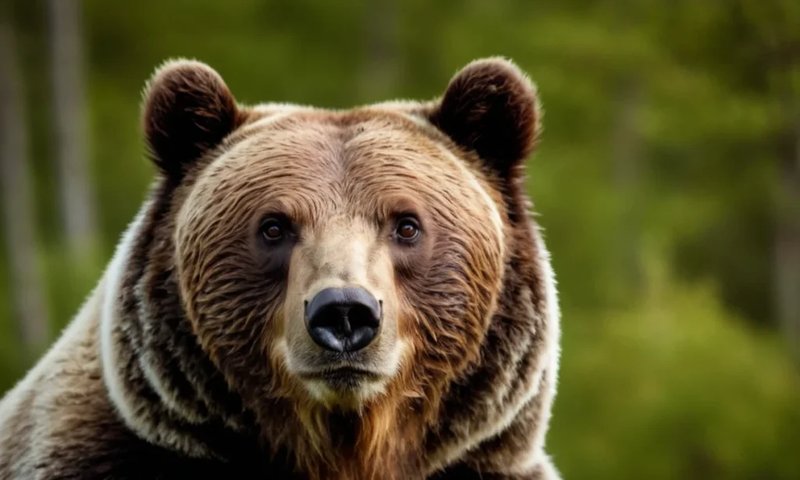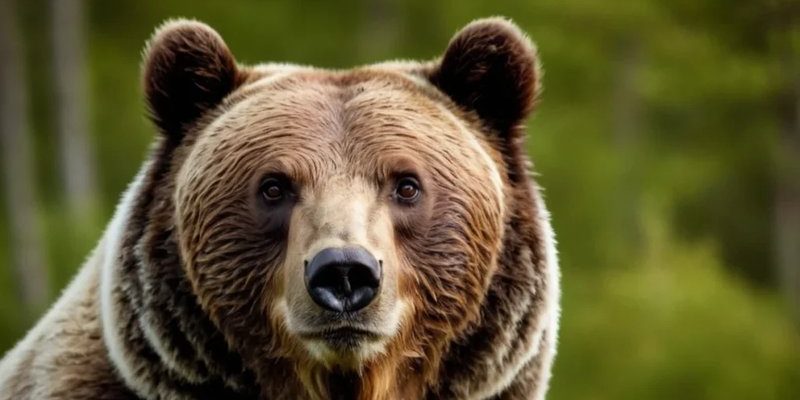
Imagine sitting around a campfire, sharing stories from different cultures—tales that highlight the relationship between humans and grizzly bears. It’s like looking through a window into the beliefs and traditions that have shaped our understanding of these incredible animals. From Native American legends to modern pop culture, the grizzly bear often embodies qualities we aspire to, making them a central figure in many narratives.
Let’s dive into the different ways grizzly bears are represented in culture and folklore. You might be surprised at the rich tapestry of stories and meanings that surrounds them.
The Grizzly Bear in Indigenous Cultures
Grizzly bears have long been celebrated in Indigenous cultures across North America. Many Native American tribes view grizzlies as revered beings, often seeing them as guardians of nature. For instance, in the Tlingit culture, bears are seen as powerful and wise. Their stories often depict the grizzly as a protector and teacher, guiding their people through the natural world.
In these narratives, the grizzly bear is more than just an animal. They are often central characters in stories that explain the balance of nature. For example, a common theme involves bears teaching humans important lessons about respect, humility, and coexistence with nature. These teachings resonate deeply, reminding us of the intricate connections we share with wildlife.
Moreover, in some tribes, bears are associated with healing and strength. The bear’s ability to hibernate and emerge renewed symbolizes resilience and transformation. This has stayed with many tribes throughout generations, affecting not just their stories but also their spiritual practices.
Grizzly Bears in Folktales and Myths
Beyond Indigenous cultures, grizzly bears feature prominently in folktales around the world. In many stories, they are depicted as heroes or villains, often embodying the duality of nature’s forces. For example, in some European myths, bears are portrayed as fierce guardians of the forest, protecting their territory against intruders.
Consider the famous tale of *Goldilocks and the Three Bears*. Here, the bears are shown as more than just ferocious animals; they represent family and the idea of home. Goldilocks’s encounters with them lead to lessons about respect for others’ spaces and belongings. This story, while simple, shows how grizzly bears can symbolize family dynamics and the consequences of one’s actions.
In other tales, bears are often seen as tricksters, similar to how crows or foxes are portrayed in various cultures. These stories often highlight the bear’s intelligence and cunning, reminding listeners that while they are strong, they are also creatures of wit and strategy.
Grizzly Bears in Modern Literature and Media
If you look at modern literature and media, grizzly bears have continued to captivate audiences. Books and movies often use grizzlies to portray the wild, untamed spirit of nature. Think of stories like *Into the Wild* or the animated film *Brother Bear*. These narratives, while different in tone and audience, share a common respect for the strength and beauty of the grizzly.
In these modern representations, the grizzly often symbolizes freedom and adventure—the wilderness waiting to be explored. They stand as reminders of the wild places still left in our world, stirring a sense of wanderlust in readers and viewers alike. These stories create a connection between us and the natural world, sparking curiosity and, sometimes, respect for these great creatures.
Additionally, grizzlies appear frequently in children’s books, teaching youngsters about the importance of wildlife conservation. These gentle stories help instill a sense of wonder and understanding about animals and their habitats, emphasizing why it’s vital to protect them.
Artistic Representations of Grizzly Bears
The grizzly bear has also made its mark in art, where its image often conveys strength and majesty. From sculptures to paintings, artists frequently depict grizzlies in a way that highlights their power and grace. Take, for instance, Native American art that incorporates bears into totems and carvings. These artworks often symbolize protection and strength, reflecting the bear’s revered status in Indigenous cultures.
In modern art, grizzlies can be found in various forms, from abstract interpretations to realistic wildlife paintings. Many artists draw inspiration from these magnificent animals, aiming to communicate their beauty and the need for conservation. Through art, the grizzly bear transcends its natural habitat, becoming a symbol of wilderness and the importance of preserving our planet.
You might also notice grizzly bears appearing in tattoo art, where they symbolize bravery and strength. For many, getting a bear tattoo embodies a connection to nature and serves as a reminder of personal strength and resilience.
Grizzly Bears and Environmental Awareness
In recent years, grizzly bears have become icons in the fight for environmental conservation. As climate change and habitat destruction threaten their populations, these animals are often used in campaigns aimed at raising awareness. The plight of the grizzly highlights the broader issues affecting wildlife and the delicate balance of ecosystems.
Organizations dedicated to wildlife preservation often use the grizzly as a symbol to represent the wilderness that needs protecting. They remind us that grizzlies serve as an indicator species—meaning their health reflects the overall health of their environment. By understanding the challenges faced by grizzly bears, we can advocate for changes that protect not just them but entire ecosystems.
Events like Earth Day or local wildlife fundraisers frequently feature the grizzly bear as a mascot, rallying support from communities to engage in conservation efforts. This connection between cultural representation and environmental action shows how deeply intertwined our respect for nature is with the stories we tell.
The Grizzly Bear as a Symbol of Courage and Strength
Around the world, the grizzly bear stands as a symbol of courage and strength. In numerous cultures, warriors and leaders have adopted the bear as a totem. This choice reflects a desire to embody the bear’s traits—powerful, fearless, and protective.
Sports teams often use the grizzly bear in their mascots, representing the fierce spirit of competition. Just think about the Chicago Bears; their logo evokes a sense of toughness, camaraderie, and determination. The grizzly becomes a symbol not just for the team but for the passion and strength of its fans.
In personal growth contexts, many people look to the bear for inspiration. Their ability to navigate challenges, adapt to seasons, and emerge stronger resonates with those facing their own struggles. The grizzly provides a model of resilience, encouraging us to face our fears and stand tall in adversity.
The way grizzly bears are represented in culture and folklore is nothing short of fascinating. From ancient Indigenous stories to modern-day media and art, these powerful animals hold a special place in our hearts and minds. They inspire us, teach us, and remind us of the wild beauty of nature.
As we navigate our increasingly urban lives, connecting with the grizzly bear’s symbolism can be rejuvenating. They call us to respect nature, embrace the spirit of adventure, and understand the importance of fighting for environmental protection. So next time you hear a story about a grizzly bear, take a moment to appreciate all that it represents—strength, resilience, and the power of the wild.

